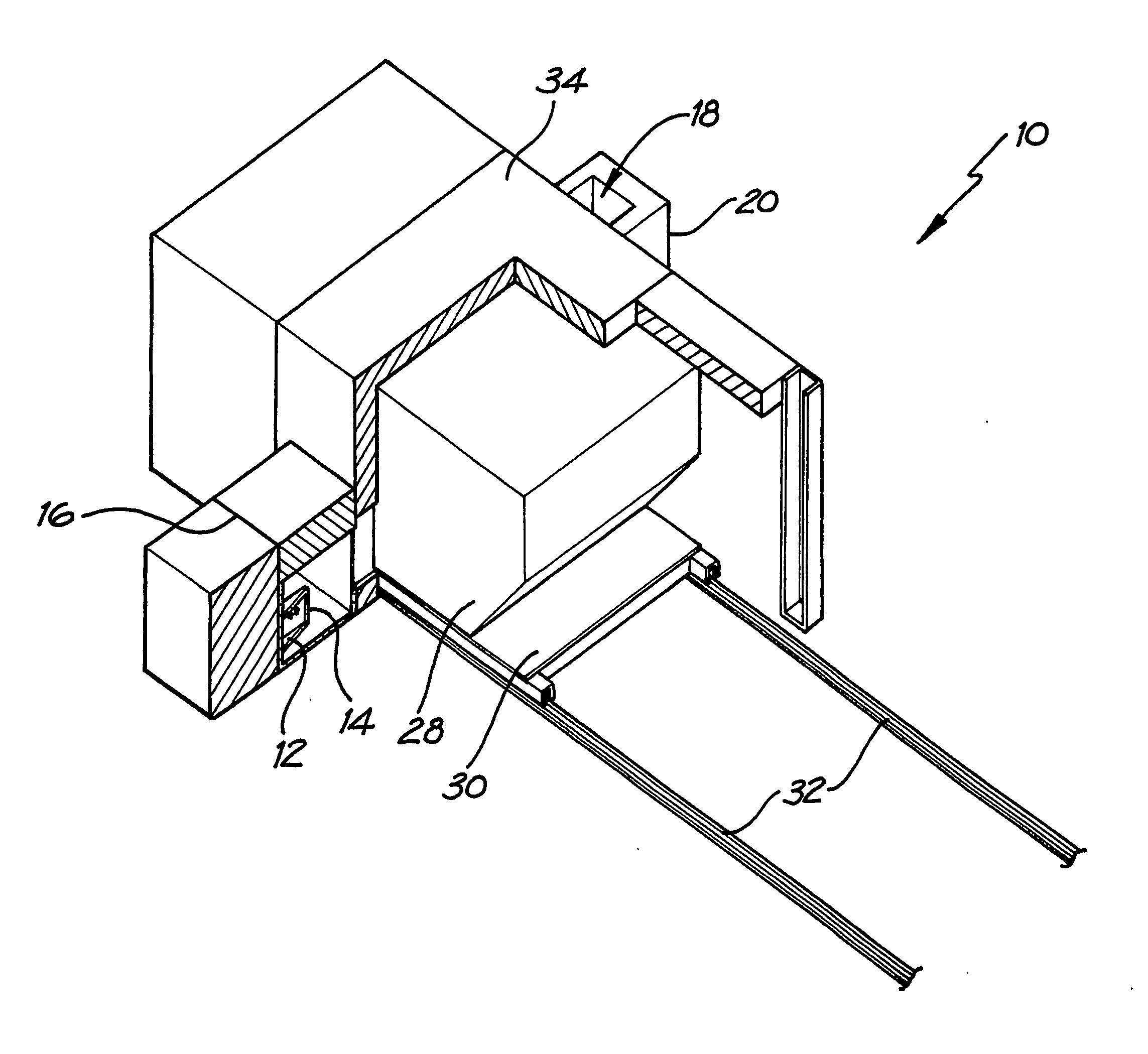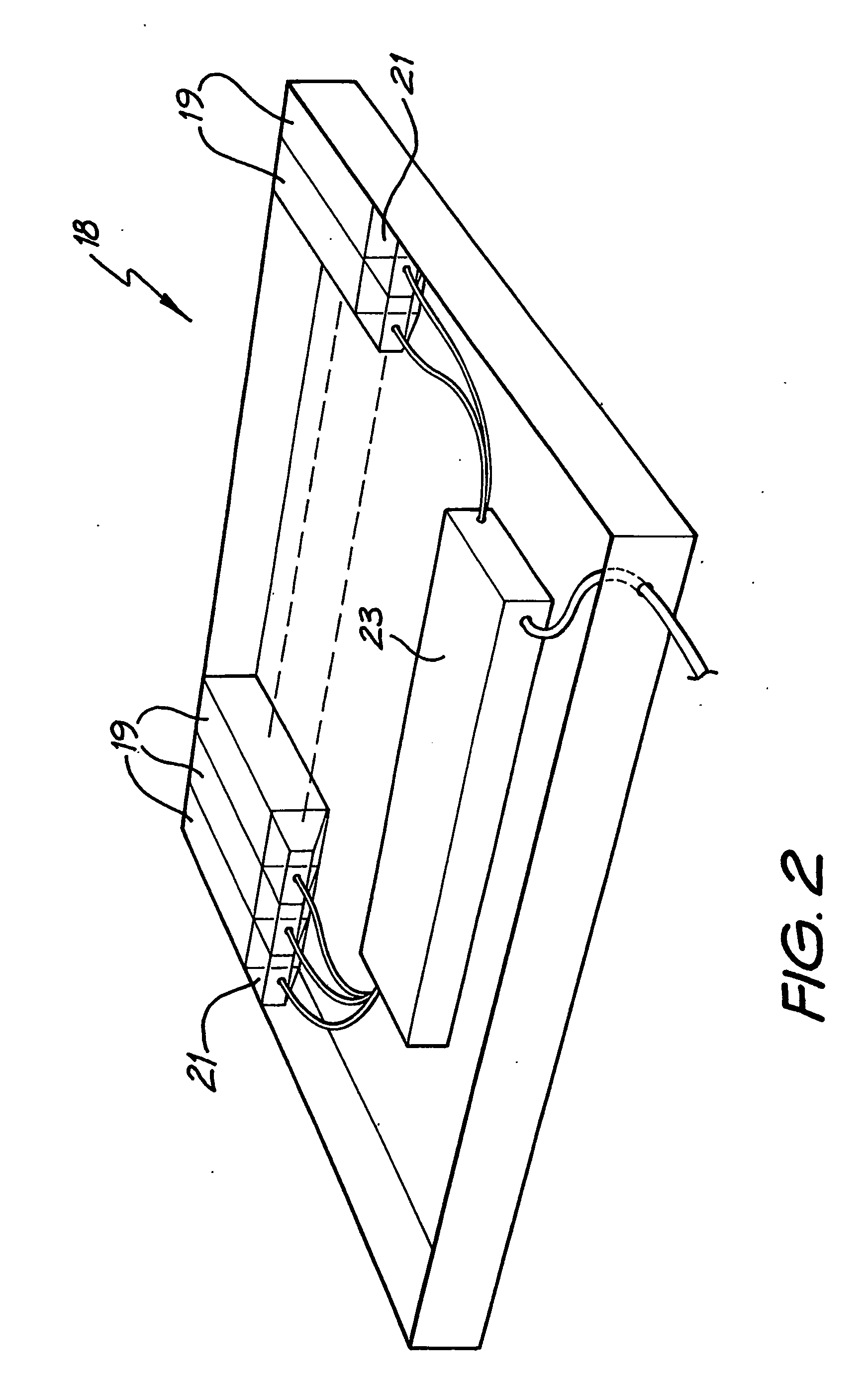Radiographic equipment
a technology of radiographic equipment and equipment, applied in the direction of material analysis using wave/particle radiation, instruments, greenhouse gas reduction, etc., can solve the problems of limited technique, inability to detect benign organic materials, and low discrimination power of x-rays, so as to enhance the capability of single energy transmission technique, improve the accuracy of information obtained, and minimise scattering
- Summary
- Abstract
- Description
- Claims
- Application Information
AI Technical Summary
Benefits of technology
Problems solved by technology
Method used
Image
Examples
Embodiment Construction
[0072]FIG. 1 illustrates the general layout of the radiographic equipment 10. The equipment 10 includes two separate generators of radiation, the first is an A-325 MF Physics neutron generator having a D-T neutron emitting module to produce a neutron energy source 12 having an energy of 14 MeV. The neutron generator is operated at a voltage of 80-110 kV. The second generator of radiation is a 0.82 GBq (or 22 mCi) 60Co source 14 to produce a source of gamma-rays and is located to the right of and adjacent to the neutron generator. The neutron generator and 60Co source 14 are situated within a source shield housing 16.
[0073] A 1600 mm long and 20 mm wide detector array 18 is situated in the vicinity of the radiation source and is housed in a detector shield housing 20. The detector array 18, more clearly shown in FIG. 2, is built up of eighty plastic scintillator rods 19 (of which only a portion are shown), each with a radiation receiving area of 20 mm×20 mm, and a length of 75 mm. T...
PUM
 Login to View More
Login to View More Abstract
Description
Claims
Application Information
 Login to View More
Login to View More - R&D
- Intellectual Property
- Life Sciences
- Materials
- Tech Scout
- Unparalleled Data Quality
- Higher Quality Content
- 60% Fewer Hallucinations
Browse by: Latest US Patents, China's latest patents, Technical Efficacy Thesaurus, Application Domain, Technology Topic, Popular Technical Reports.
© 2025 PatSnap. All rights reserved.Legal|Privacy policy|Modern Slavery Act Transparency Statement|Sitemap|About US| Contact US: help@patsnap.com



